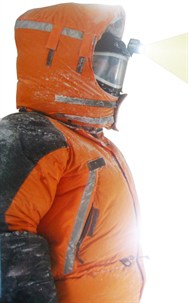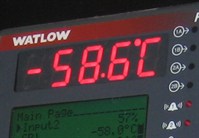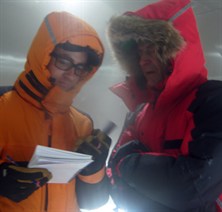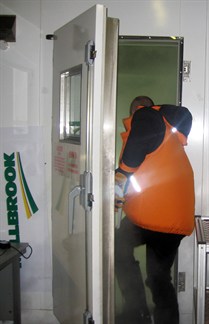 The team returned to Millbrook for a further day of testing on 28th September, 2012, this time joined by members of the Ice Team, a number of our sponsors and Tristam Kaye and Hugh Bowring from Operations HQ who were there to help out and relay the day’s events via our social media channels of blogs, Facebook and Twitter. A few members from Finning UK were also there to oversee the selection
The team returned to Millbrook for a further day of testing on 28th September, 2012, this time joined by members of the Ice Team, a number of our sponsors and Tristam Kaye and Hugh Bowring from Operations HQ who were there to help out and relay the day’s events via our social media channels of blogs, Facebook and Twitter. A few members from Finning UK were also there to oversee the selection  of the team’s second mechanic after Danny Main had to drop out of the expedition for personal reasons. Read more about the team selection process and who was picked here.
of the team’s second mechanic after Danny Main had to drop out of the expedition for personal reasons. Read more about the team selection process and who was picked here.
Following the first phase, the equipment team was able to put together what they considered to be the best combination of clothing and equipment. Although the kit had been tried out during a training exercise in Sweden in early 2012, the temperatures there only dropped to around -40°C and so the second phase offered the opportunity for Ice Team members to try the suits out in lower temperatures and, crucially, for periods of up to three hours, compared with just 45 minute stints in the initial test phase. The team was also able to put to test the central power system in its entirety. The system was designed especially for the expedition by Alan Barford of Allied Associates and is powered by a 700g battery worn in a chest pocket which provides
The team was also able to put to test the central power system in its entirety. The system was designed especially for the expedition by Alan Barford of Allied Associates and is powered by a 700g battery worn in a chest pocket which provides  electricity for the member’s radio and torch, as well as the boot, glove and visor heating elements. Although the rechargeable battery will predominantly be used for powering the radio during the traverse, the equipment team showed that with everything on and working well, it would last between three and four hours before needing to be replaced by a fresh one from the caboose.The day proved to be a great success and boosted the confidence of the team that they had selected the best possible combination for the team. The cold chamber ran flat out during the day and dropped as low as minus 58.3c on one occasion, getting close to the sorts of temperatures the Ice Team will regularly experience on the traverse.Check out the Clothing section for layer by layer information and images of the likely configuration of clothing to be worn during the traverse.
electricity for the member’s radio and torch, as well as the boot, glove and visor heating elements. Although the rechargeable battery will predominantly be used for powering the radio during the traverse, the equipment team showed that with everything on and working well, it would last between three and four hours before needing to be replaced by a fresh one from the caboose.The day proved to be a great success and boosted the confidence of the team that they had selected the best possible combination for the team. The cold chamber ran flat out during the day and dropped as low as minus 58.3c on one occasion, getting close to the sorts of temperatures the Ice Team will regularly experience on the traverse.Check out the Clothing section for layer by layer information and images of the likely configuration of clothing to be worn during the traverse.

